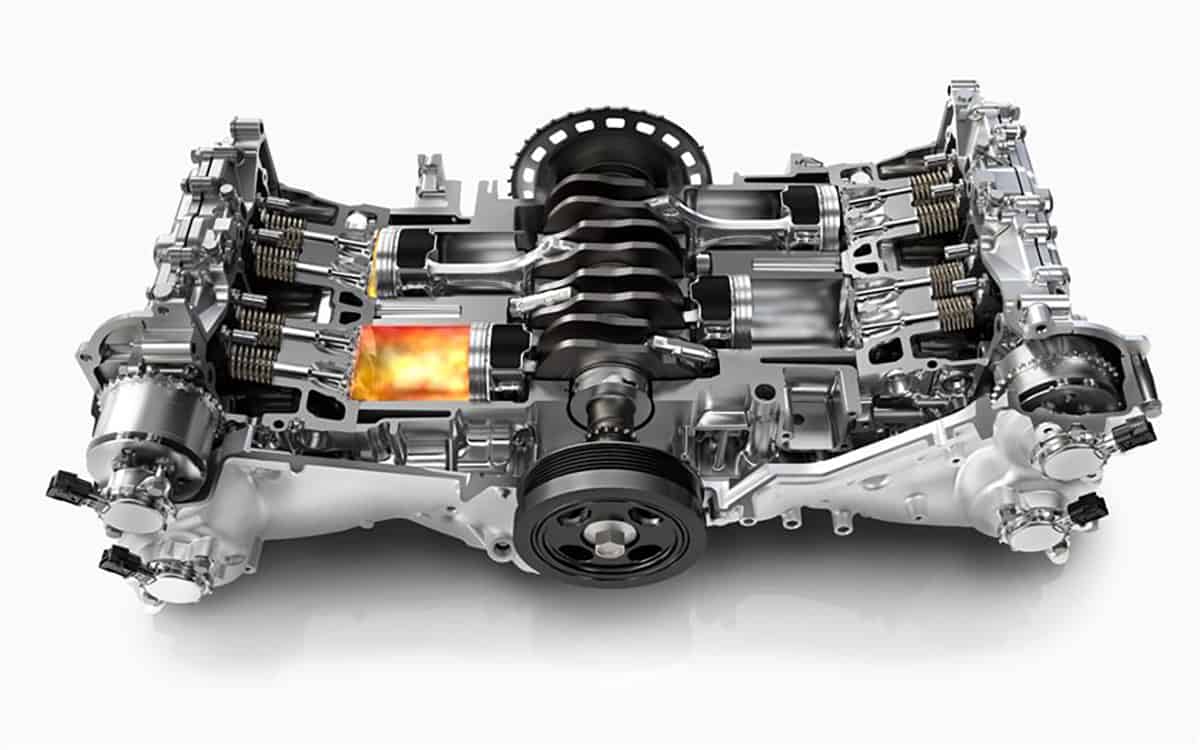

There are only a few manufacturers that still use boxer engines. See Also – Symptoms of a Bad Camshaft Position Sensor Boxer Engines: Subaru and Porsche A myriad of puny issues for an engine that nowadays is unique (2). Oil lines are more difficult to design and implement, and the same can be said about the coolant circuit.

Having the engine so low to the ground competes with the suspension room and driveshaft room. Following suit, the engine has more complex timing, with multiple parts that could fail.Ĭhanging anything regarding the engine’s top-end is a major hassle since the engine typically requires demounting from the car. We are talking about a V-type engine and, consequently, it has two camshafts, two intake headers, and two headers minimum. The Downsides of Boxer Engines The 2019 Subaru Forester comes with a 2.5-liter boxer four-cylinder engine.īoxer engines have their downsides as well. Last, but certainly not least, positioning the engine’s bulk so close to the ground shifts the car’s center of gravity downwards, resulting in better dynamic characteristics across the board. Moreover, having the engine so short meant that now there’s significant room above it, enough for a better flowing intake design, a bigger radiator, more room to play with auxiliary components, and potentially a slicker design. This resulted in a significantly simpler engine design, without a water pump or coolant paths inside the block. See Also – Why Is My Engine Making a Ticking Noise? Boxer Engine Technical Aspectsīesides noise, vibration, and harshness, we also need to consider the technical particularities of a flat engine or boxer engine.ĭesigning the cylinders so far apart from one another allowed engineers to develop a honeycomb structure around the engine, allowing them to forego water cooling and opt for air cooling. The header design is also simple compared to those found in regular V-type engines or in-line engines, by not having to descent from the camshaft to the car’s floor as much, which also assists the unique sound note. Thus, the gasses from each cylinder will travel substantially different distances, developing a sort of audible gap in between each firing stroke. Remember that we are describing a particular V-type engine, so each side has its own valvetrain and a more complex intake/exhaust header design.ĭue to the 180-degree layout, designing the exhaust headers is different than on any other engine type, resulting in one side being shorter than the other side. We still must discuss noise, more precisely the famous boxer rumble. Notwithstanding this, boxer-six or larger ones do have a certain rocking motion when seen from above and engineers must design some form of counterbalance into the engine to counteract this.Įven so, the vibration generated by a boxer engine is so insignificant that counterweights are not necessary, which also translates into a lighter rotational mass inside the engine (1). Read Also – 4 Signs of a Broken Motor Mount (and Replacement Cost)

If we are talking about a boxer-four, then we do not have any rocking motion either, translating into a subtle-running engine. Moreover, seeing how engines have an even number of cylinders, each pair will cancel each other out, so the resulting vibration is not particularly noticeable. Therefore, these forces chiefly cancel each other out. Seeing how each piston is symmetrically opposed to its pair, if a force is applied on one of them then the other piston will also generate a similar, but smaller, force going in the opposite direction. A boxer engine is smooth and well-balanced. The significant and noticeable change is regarding its noise, vibration, and harshness characteristics. Now we have the obvious question: what does it matter if they are flat or in-line? Surprisingly, this configuration changes numerous features, either as improvements or downsides. Noise, Vibration, and Harshness (NVH) This 2014 Porsche Cayman S comes with a 3.4-liter boxer six-cylinder engine.


 0 kommentar(er)
0 kommentar(er)
